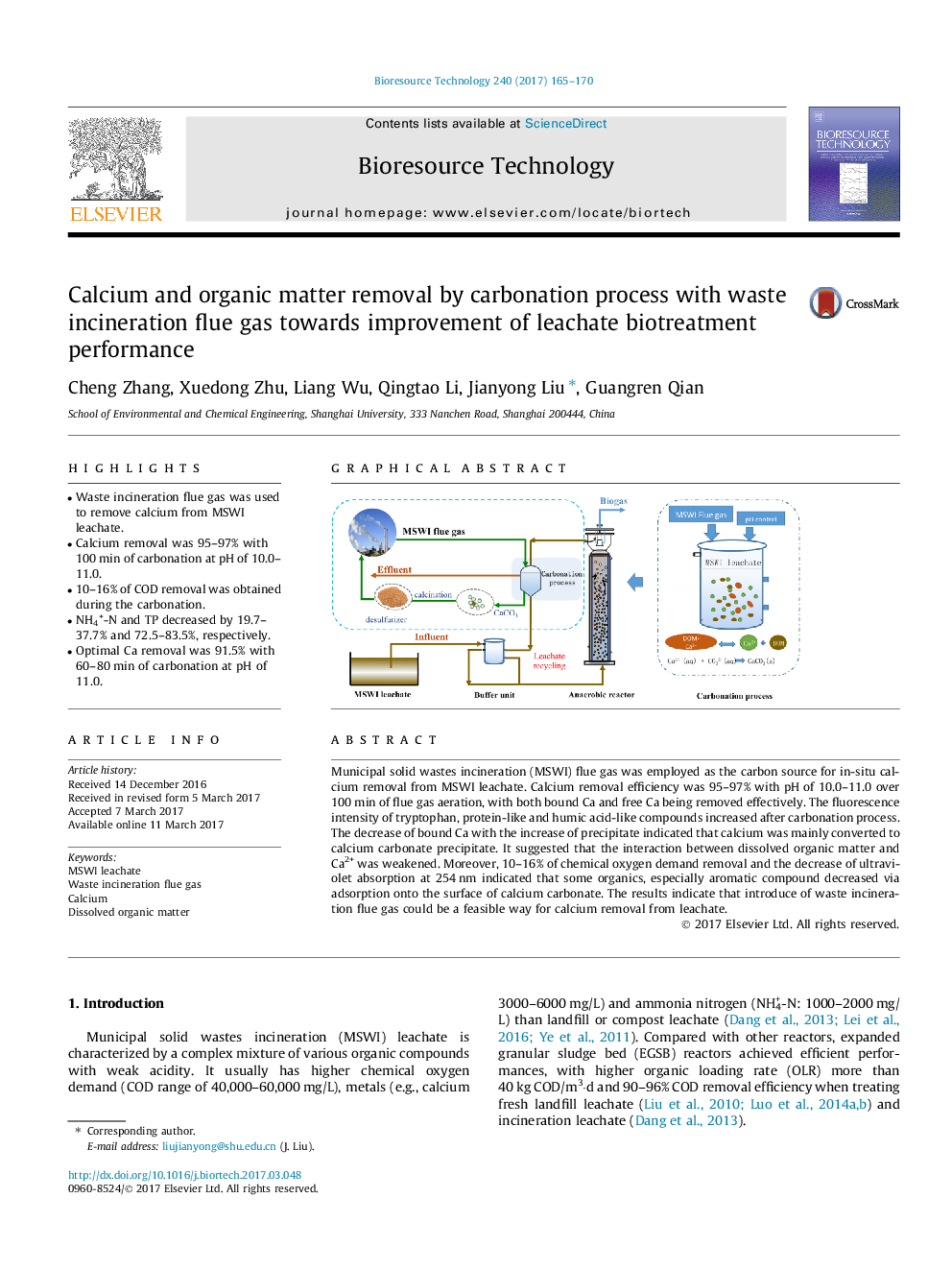| Article ID | Journal | Published Year | Pages | File Type |
|---|---|---|---|---|
| 4996740 | Bioresource Technology | 2017 | 6 Pages |
â¢Waste incineration flue gas was used to remove calcium from MSWI leachate.â¢Calcium removal was 95-97% with 100 min of carbonation at pH of 10.0-11.0.â¢10-16% of COD removal was obtained during the carbonation.â¢NH4+-N and TP decreased by 19.7-37.7% and 72.5-83.5%, respectively.â¢Optimal Ca removal was 91.5% with 60-80 min of carbonation at pH of 11.0.
Municipal solid wastes incineration (MSWI) flue gas was employed as the carbon source for in-situ calcium removal from MSWI leachate. Calcium removal efficiency was 95-97% with pH of 10.0-11.0 over 100Â min of flue gas aeration, with both bound Ca and free Ca being removed effectively. The fluorescence intensity of tryptophan, protein-like and humic acid-like compounds increased after carbonation process. The decrease of bound Ca with the increase of precipitate indicated that calcium was mainly converted to calcium carbonate precipitate. It suggested that the interaction between dissolved organic matter and Ca2+ was weakened. Moreover, 10-16% of chemical oxygen demand removal and the decrease of ultraviolet absorption at 254Â nm indicated that some organics, especially aromatic compound decreased via adsorption onto the surface of calcium carbonate. The results indicate that introduce of waste incineration flue gas could be a feasible way for calcium removal from leachate.
Graphical abstractDownload high-res image (114KB)Download full-size image
